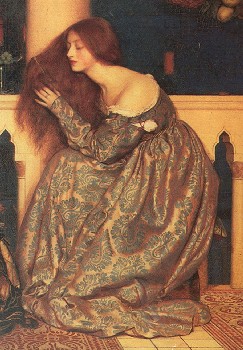|
Notes From The Designer
It is not obligatory to include foundation garments such as bum-rolls with period gowns or for wedding gowns based on period shapes. However, subtly positioned padding will reliably provide the appropriate profile of the period, so that at a glance a gown will look "right". These "supports" can vary in size from tiny pads, worn at the back of the waist for a classic "Austen Era" gown - just enough to support folds of muslin - via crescent shaped hip pads to support medium-sized eighteenth century shaped skirts, through to complete "wrap-around" sausage-shaped pads to support Elizabethan farthingale frames. Pads and panniers, like seperate corsets are not vital, but they can be the difference between a professionally constructed gown or period costume and a more amateur effort. They do not have to be purely practical and can be made in the most sumptuous fabrics, decorated with embroidery and lace for bridal gowns based on period styles. If you are averse to the idea of pads and rolls, various combinations of stiffened frills and petticoats can give a similar efffect. Some people (including professional designers who should know better!) think a bum-roll is worn around the waist. It should actually be worn lower than this: closer to hip-bone level. Worn correctly, the major benefit of bum-rolls, bustle frills and small hip panniers is to make the waist look tiny! Inclusion of these items or not is down to personal taste. | |

Original source inspiration above. |